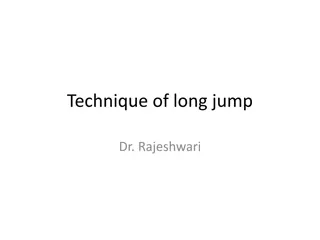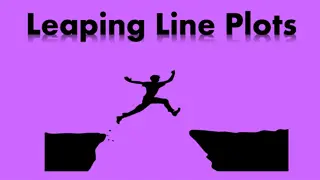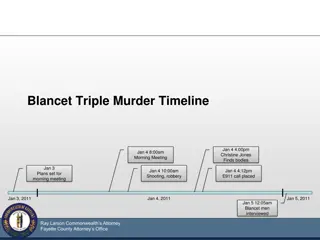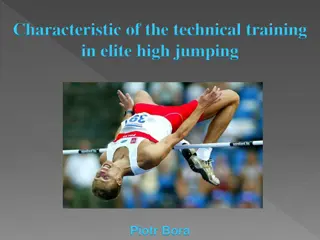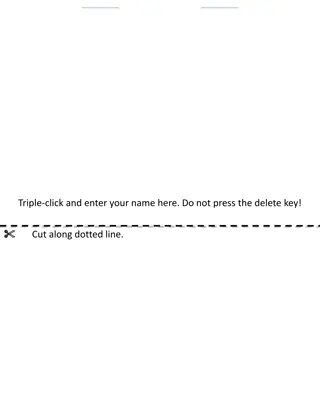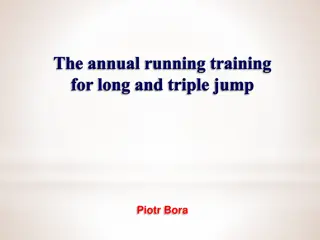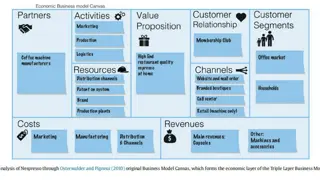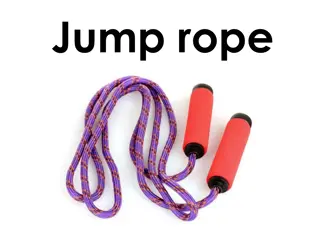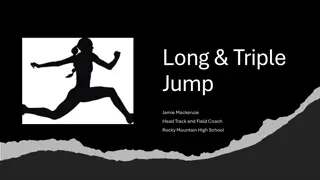The Triple Jump
Enhance your knowledge about the triple jump with insights on approach, take-off, phases, training plans, and more. Explore detailed instructions and images to improve your understanding and coaching skills.
Download Presentation

Please find below an Image/Link to download the presentation.
The content on the website is provided AS IS for your information and personal use only. It may not be sold, licensed, or shared on other websites without obtaining consent from the author.If you encounter any issues during the download, it is possible that the publisher has removed the file from their server.
You are allowed to download the files provided on this website for personal or commercial use, subject to the condition that they are used lawfully. All files are the property of their respective owners.
The content on the website is provided AS IS for your information and personal use only. It may not be sold, licensed, or shared on other websites without obtaining consent from the author.
E N D
Presentation Transcript
The Triple Jump By Jeremy Fischer- Maximum Velocity Athletics
The Triple Jump Keys to Triple Jumping Creating a Sound Technical Model The Approach The Take- Off Phase Maintenance Drill Progressions The Combination Athlete
Try to establish a training plan based on each individual and/or groups Using a single arm take-off, double arm take off, or hybrid- use as base for drills Base training volume, intensity, technical, and periodization after initial assessment, training age, development of athlete Creativity of coach Creating a Sound Technical Model
The Approach Acceleration Phase/ Push Phase Length of Accel. Phase Create initial horizontal velocity Varies depending on length of total approach, 4-8 total steps Horizontal force creation Shin Angles
The Approach Cont. Continuation Phase- Jump Set Up Phase Transition Phase Change from Accel to Max. Controlled Speed Change from Hor. Force to Vertical Force Last 4-5 Steps of Approach Maintain Speed Maintain Posture
The Approach (continued) Consistency of Phase Use of a check mark Static vs Dynamic Start Consistency regardless of approach, static is more accurate
Approach Marks for Coaches
The rate limiting step- determines large part of success of jump Double-arm vs single vs hybrid Main thing is maintain horizontal velocity A common trait seen in very successful jumps Free Leg Thigh is parallel off the board= see large horizontal displacement The Take Off
The Free Leg after take off is dropped down and creates a long lever Slows rotation of take off leg Less successful athletes swing leg in a bent position back behind Causes excess rotation and adds to forward rotation Arms never break midline of successful athletes Diminish rotational values The Take Off (continued) - The first phase is lowest of the three phases - High flight path creates large breaking values
Phase Maintenance After completion of first phase/hop phase arms need to coordinate and block- to create de- weighting and diminish ground contact time Foot should be grounded close to center of mass to reduce breaking forces This may be first time you see resultant mistakes made by poor positions at take-off
After completion of second phase/step phase, you ll see mistakes exasperated (forward rotation, excessive decrease of horizontal momentum, not completing jump) Arms should be coordinated again, parallel free thigh, highest angle of any phase Important that athletes block off/finish jump Phase Maintenance (continued)
Drill Progression Always teaching arm coordination and foot placement Take Off Drill Basic Step into Take Off Underneath COM, Driving Knee and Using Single or Double Arm Continuous Knee Drive Drill Drive Free Leg Knee Up and Down Take Off Drill Step Take Off Drill Step Into Take Off Take Off Drill Step Onto Box Take Off Drill Step onto Box Take Off Drill 3 Step 3 Steps into Take Off
Drill Progression (continued) Step On Box Free Leg Rotation Through 2 Hurdle Penultimate Drill Over Take Off Leg Horizontal Run, Run Jumps Speed Bounds Allow Free Leg to Rotate Between Two Hurdles Roll Onto and Work on Going Horizontal Fast Alternate Bounds
Drill Progression (continued) Easy Alternate Short Bounds Work on Arms and Late Active Foot Easy Single Leg BoundsWork on Arms Late Active Foot, Low Rotation of Foot Medium Alternate Bounds Work on Arms Late Active Foot
Drill Progression (continued) Mini Hurdle Take Off Continuous Mini Hurdle Take Offs 3 Mini Hurdles 1,2 Over Hurdle (5m Apart) Mini Hurdle TapsTap Top of Hurdle with Free Leg Foot Box Step on Step Off Drill 4 Step Run Over Mini Hurdle Work on Upright Body Position
Drill Progression (continued) Box Step on Step Off 1,2 Drill Step on Step Off Box and 1,2 Pop Off Ground Stride on Box Step Off 1,2 Drill Off Ground Box Pop Offs Stride on to Box then 1,2 Run Stride into and Run Off Ground
Drill Progression (continued) Short Run Jumps Strides Rhythm Runs Speed Rhythm Runs with a Run Off End Various Short Run Jumps 4,6,8,10,12 Approach Work Using 70-80% of 70-80% Runs with a Run Off at
The Combination Jumper Will Claye was the first male athlete to win a medal in LJ and TJ at the London Olympics since 1936, Why? Big interference between long jump and triple jump Teach athletes to be weak, weak, strong jumpers Meaning if they LJ off their right leg, then they need to go right, right, left in the triple jump Interference due to the different nature of the take offs in the two events
Jeremy Fischer, jhfischer76@gmail.com www.mva.services Thank You





